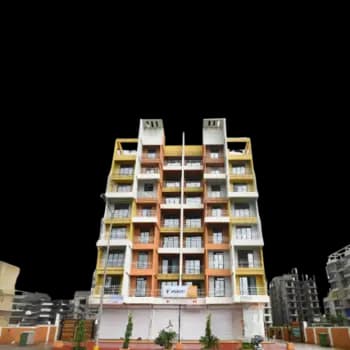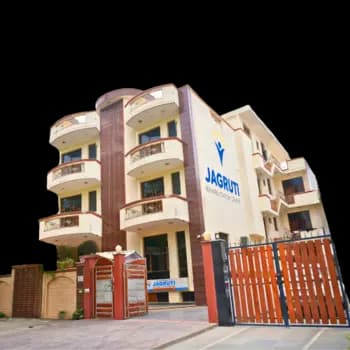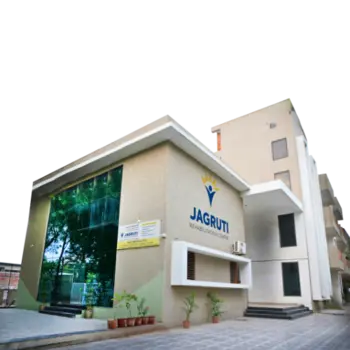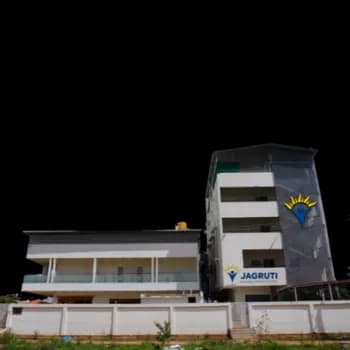Mania Disorder Treatment
Mania disorder is a psychological issue characterised by increased energy levels, hyperactivity and severe mood swings. However, symptoms are not always very evident. A person suffering from mania disorder could exhibit certain symptoms intermittently which must be caught at the right time before it turns into a serious mood disorder.
Here, we will discuss Mania disorder treatment, symptoms that characterise a Mania disorder and various myths that can hamper a Mania treatment.
What is Mania Disorder?
Mania Disorder, also called Manic Disorder is a condition in which a person exhibits hyperactive behaviour. He or she is abnormally elevated or irritable and has high energy levels. The level of physical and mental activity is always unusually high so much so that everyone around you can notice the behaviour change.
A person suffering from Mania disorder expends a great deal of energy on performing certain activities that will do no good to him. Mania disorder can be caused because of genetic dispositions, lack of sleep, excessive mental stress and even chemical imbalances.
What are the Symptoms of Mania Disorder?
A person suffering from Mania disorder when he experiences all or some of the following symptoms.
- Elevated Emotional Levels: A persistent feeling of euphoria is experienced by patients suffering from Mania. They are always on a high which makes them indulge in risky activities or self-harming behaviour. Thoughts occur at a racing speed in a patient’s mind.
- Frequent Mood Fluctuations: A person with mania disorder experiences mood fluctuations. Therefore, the patient will either be too happy and aggressive or feel depressed. Increased talkativeness, lack of concentration and feeling jumpy are other behavioural changes experienced by a patient.
- High Libido and Risky Lifestyle: A manic patient usually suffers from a higher sex drive and adopts a reckless lifestyle like random spending sprees. He might indulge in unprotected sex and could even get addicted to drugs.
Steps of Mania Disorder Treatment
Thorough diagnosis, determining frequency of counselling sessions and prescribing medication according to the quantum of mental health issues are included in mania disorder treatment. Once the therapy is over, a detoxification program is conducted to prevent relapse.
Diagnosing Mania Disorder:
A comprehensive process of physical examination and psychological assessment is conducted at Jagruti Rehab Centre. Here is how mania disorder can be diagnosed correctly:
- Interview Sessions: Clinical interviews of a patient are conducted before deciding if admission is needed or not. A mental health expert needs first hand information about the symptoms and attitude of the patient. Friends and family are also interviewed to know if there is a stark difference in behaviour.
- Determine Symptoms Time Frame: Determining the duration of episodes is important for them to persist for more than a week. To qualify as a mania disorder, there should be an evident difference in behaviour for more than a week or ten days.
- Strengthen the relationship with people personally and professionally
- Study Patient History: Psychiatrists rule out any other possible disorders as symptoms can be similar to a bipolar disorder. Moreover, side-effects of certain treatments can also make an individual experience mania symptoms.
- Tools like filling questionnaires and rating scales are sometimes used to further analyse the severity of the situation. This determines the stage of an individual’s problem. A Mania disorder treatment is then framed by a team of psychologists and psychiatrists at Jagruti Rehab Centre.
Rehabilitation programs For Mania Disorder at Jagruti Rehab Center
Rehab programs at Jagruti Rehab Centre are detailed and customised according to a patient’s state of mind.
- Intensive Outpatient Programs (IOPs) Opting for a dedicated full-time treatment plan is not always feasible. Therefore, patients who want to run a normal course of life while taking therapy alongside must consult a therapist at Jagruti Rehab Center. Scheduled therapy sessions, consistent counselling and tracking of performance is a part of the process.
- Short Term and Long Term Programs Whether you are in the in-patient or an out-patient program, length of the treatment is determined according to a patient’s condition and comfort. A short course of treatment spans around 90 days and a longer treatment can take up to one year. 24/7 care is provided to admitted patients and medication is prescribed according to the severity of the problem.
- After Care Services and Supportive Housing Preventing relapse is as important a step as any other in the treatment. Therefore, support groups and help from family and friends plays a major role. Intermittent appointments and check-ups is a must to ensure that a patient is stable.
- Managing Withdrawal Symptoms The treatment does not end at the last counselling session. Detox programs are a part of the treatment to manage withdrawal symptoms for those who were prescribed drugs. Whether you are an inpatient or an outpatient case, therapists at Jagruti Rehab Centre give extra appointments to patients to keep a check on their recovery.
- Effective Therapies for Mania Disorder Treatment Many treatments can be prescribed to people suffering from Mania disorder. However, at Jagruti Rehab Centre, mania treatment starts by understanding the causes and severity of the problem. One of the following mania disorder treatments can work effectively for the long-term recovery of a person. Read on to learn more about therapies available for patients.
- Cognitive Behavioural Therapy Cognitive Behavioural Therapy (CBT) is a mania disorder treatment that aims to alter unhealthy behaviour patterns of an individual. A mental health expert tries to understand the reasons that caused this problem in the first place and then goes ahead with questioning and conversing. CBT works effectively when a person tries to make rash decisions when he or she is feeling elated. The theory of therapy says that a person’s thoughts, feelings, emotions and behaviour are interconnected. Therefore, gaining control over the speed of emotions a person is experiencing in a short time frame is a must to control so that it slows down. Here are 3 most common approaches under CBT:
- Rational Emotive Behaviour Therapy: Categorised under CBT, rational behaviour therapy enables a patient to challenge old beliefs and follow new ones. Breaking old patterns can be very difficult without therapy. Therefore, with professional help a patient can achieve this feat.
- Dialectical Behaviour Therapy: By following this path, a patient is able to regain emotional stability. He or she is able to manage the response to triggers by being mindful and aware of one’s circumstances.
- MultiModal Therapy: Along with psychological recovery, this therapy also lays emphasis on social and behavioural recovery of a person. An individual’s cultural and social background is taken into consideration when a treatment plan is framed.
- Family Therapy : Family therapy is a mania disorder treatment for managing bipolar disorder that works on multiple levels. Some therapists opt for Cognitive Behavioural Family Therapy (CBFT) in which negative patterns of the entire family are analysed. This Mania disease treatment works on personal relationships and much more. Seasoned mental health professionals at Jagruti Rehab Centre prescribe family therapies that trace the root cause of the problem.
- Systemic Family Therapy is a psychotherapy that focuses on how an individual’s frame of mind is affected by everyone around him. Personal relationships directly impact the behaviour patterns and life choices of an individual. With the help of this therapy, the therapist tries to understand how a family acts and interacts as a unit.
- In Structural Family Therapy, every member of a family can voice their concerns and opinions about the problem. Open discussion is done to confront all problems and find a common ground of understanding.
- Narrative Family Therapy trains a patient to get over their traumas independently. Therapists enable patients to take control of their narrative and process their personal experiences from a third-person point of view.
- Medication : Psychiatrists and doctors prescribe many kinds of drugs to treat the highs and lows during a manic episode. Antidepressants, mood stabilisers and antipsychotic drugs are prescribed to keep a patient emotionally stable.
A therapist understands the pain points in an individual’s life. He or she draws a Mania disorder treatment plan to cure according to severity. A patient is trained to control his behaviour and reactions when he is feeling extremely high or very low. This goal-oriented approach educates a patient about bipolar disorder. Future episode intervention is a part of the treatment so that relapse can be prevented.
Hallucinations are common among people who suffer from manic disorders. Distorted thought patterns affect a person’s cognitive skills, and judgement abilities and may even distort memory. Therapists at Jagruti Rehab Centre work on a patient to ensure that he or she can differentiate between these hallucinations and reality to stay more aware.
Cognitive Behavioural Therapy:
The entire process includes educating the family about the disorder. Then communication skills of the patient are improved so that he or she can share their problems with the family and therapist properly.
Lastly, families are counselled to solve problems on a personal level so that the disorder can be managed at home. This therapy is particularly helpful in preventing the problem from getting worse.
A Mania disorder treatment centre must use the latest technological tools like visual aids to make the process easier and more sensitive. Such tools make it easier for the family to comprehend the situation properly and more conveniently.
Mental health practitioners at Jagruti Rehab Centre also resort to Maintenance Therapy. This allows a patient to maintain his mental health by continuing consumption of certain drugs for decades to prevent an attack. However, a patient can stop consumption of these drugs at one’s wish and will as withdrawal symptoms can be serious and life-threatening.
Therapists with the best treatment for mania disorder make sure that the patient has a healthy diet and follows a proper exercise regime. Instead of providing them with isolated therapy sessions and prescribing mood-managing medication, he prescribes a comprehensive treatment that includes everything.
Measuring Effectiveness of Mania Disorder Treatment
The team of mental health professionals at Jagruti Rehab Centre look for frequency of symptoms. By giving regular appointments even after a treatment plan is complete, they assess the emotional stability of the patient and ask for his feedback.
A before and after analysis is done to ensure that the patient is leading a better and a more comfortable life.
Conclusion
Following the treatment to a T and discussing every aspect of your problem with your therapist is a must. Over-consumption of medication and excessive internet surfing must be avoided as every treatment follows a specific path. Along with other psychological issues, Jagruti Rehab Centre offers the best treatment for Mania disorder. With round-the-clock nursing staff on board and well-experienced psychiatrists on the panel, Jagruti is a one-stop shop for all kinds of psychological issues.
Visit the centre for a first-hand experience or you can even visit the Jagruti rehab centre website to learn more about the facility.







